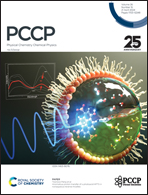Asymmetric XMoGeY2 (X = S, Se, Te; Y = N, P, As) monolayers as potential flexible materials for nano piezoelectric devices and nanomedical sensors
Abstract
Highly efficient nano piezoelectric devices and nanomedical sensors are in great demand for high-performance piezoelectric materials. In this work, we propose new asymmetric XMoGeY2 (X = S, Se, Te; Y = N, P, As) monolayers with excellent piezoelectric properties, dynamic stability and flexible elastic properties. The piezoelectric coefficients (d11) of XMoGeY2 monolayers range from 2.92 to 8.19 pm V−1. Among them, TeMoGeAs2 exhibits the highest piezoelectric coefficient (d11 = 8.19 pm V−1), which is 2.2 times higher than that of common 2D piezoelectric materials such as 2H-MoS2 (d11 = 3.73 pm V−1). Furthermore, all XMoGeY2 monolayers demonstrate flexible elastic properties ranging from 96.23 to 253.70 N m−1. Notably, TeMoGeAs2 has a Young's modulus of 96.23 N m−1, which is only one-third of that of graphene (336 N m−1). The significant piezoelectric coefficients of XMoGeY2 monolayers can be attributed to their asymmetric structures and flexible elastic properties. This study provides valuable insights into the potential applications of XMoGeY2 monolayers in nano piezoelectric devices and nanomedical sensors.



 Please wait while we load your content...
Please wait while we load your content...